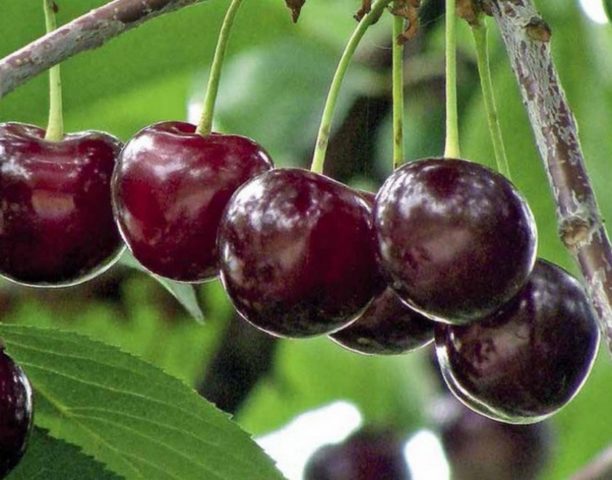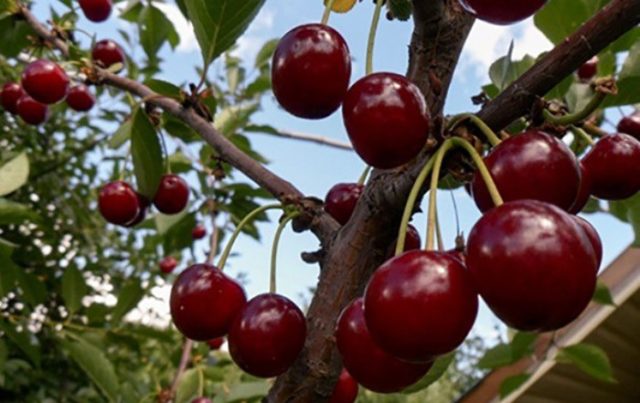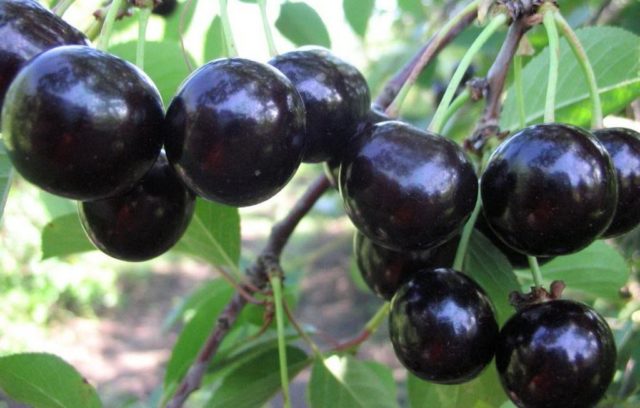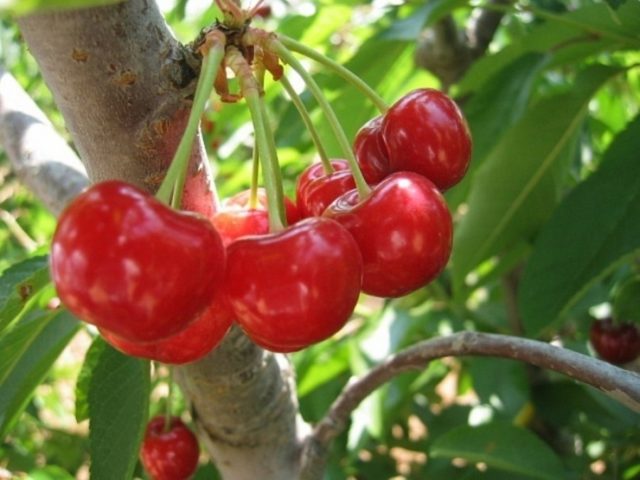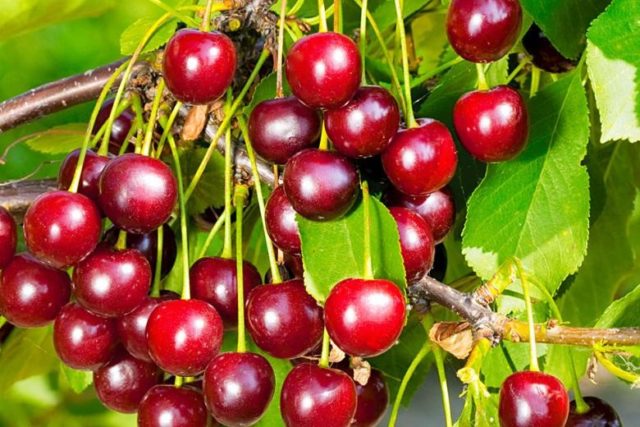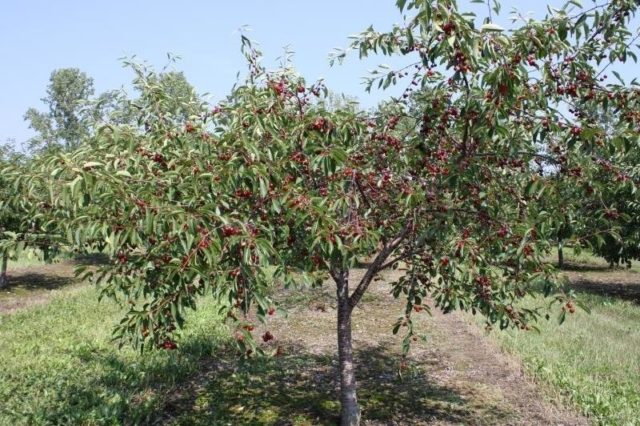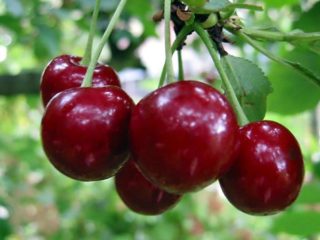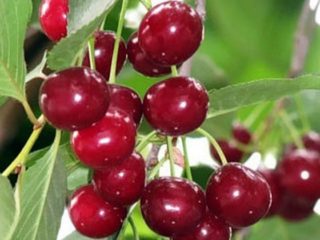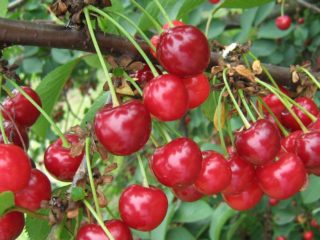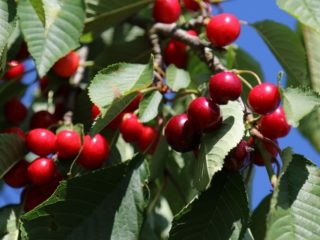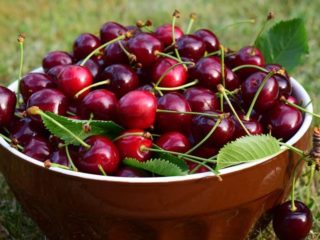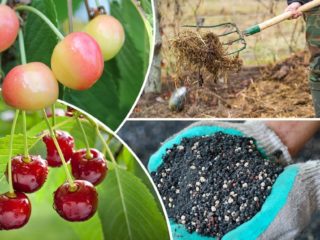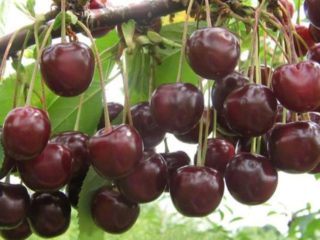Content
The Morel cherry is one of the oldest and most popular cherry varieties among gardeners, with many varieties. Morel cherries on the site have many advantages, but you should carefully familiarize yourself with its features and cultivation rules.
Description of Morel cherries
The Morel cherry is considered one of the oldest - it was bred back in the 18th century in Holland, from where it came to Russia. In the twentieth century, breeders worked hard on the variety and developed several modern subspecies of the plant.
The description of the Morel cherry variety largely depends on the specific variety. But usually the plant is a tree up to 2 m tall with a wide spreading crown and dense foliage. The branches of the cherry tree are covered with ash-gray bark, the young shoots are brownish with a slight silvery tint.Cherry leaves are medium-sized, up to 7 cm in length, flowers are small, up to 3 cm in diameter, blooming in inflorescences of 4 flowers each.
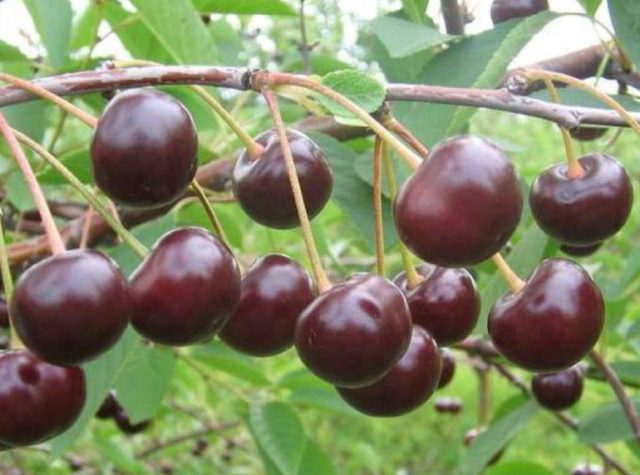
Morel - a delicious cherry variety for the Central region
Varieties of Morel cherries
There are several subspecies of the variety that are especially popular among gardeners:
- Lotovka. The black Morel cherry variety is distinguished by late fruiting and bears dark burgundy, almost black berries. Lotovka is grown mainly for processing; its fruits are best suited for jams and desserts.
- Bryansk. The very popular Moreli variety is distinguished by particularly large dark red fruits with juicy pulp. The Morel Bryanskaya cherry variety is distinguished not only by its dessert taste, but also by its good keeping quality, which is why it is especially loved by gardeners who grow cherries for sale.
- Chernokorka. The description of the black cherry variety Amorel says that Chernokorka bears dark, sweet fruits suitable for making jams, tinctures and compotes. Chernokorka has good taste, but cannot bear fruit without pollinators, which reduces the value of the species.
- Amorel Early. Pink Amorel cherries bear large fruits with a sweet and sour taste and are highly resistant to pests and fungal diseases. The tree is one of the tallest among the Morel subspecies and can reach 4 m. The southern regions are optimal for growing the species.
- Nefris. The Morel cherry variety bears dark red fruits with a sweet and sour taste and belongs to the dessert category.Although the taste qualities of Nefris are highly rated by gardeners, it is quite difficult to grow this plant - cherries do not tolerate cold well and are susceptible to many fungal diseases.
Among the variety of Morel subspecies, it is not difficult to choose a tree that ideally meets your wishes and climatic conditions.
Height and dimensions of an adult tree
The height of the cherry, as well as its shape, are determined by the specific variety. Most often, Morel is a low tree up to 2 m in height with a spreading, densely leafy crown about 2 m in diameter. Some Morel species grow up to 3-4 m in height, in particular Early Amorel.
Description of fruits
The weight and taste of Morel fruits are also determined by the type of particular tree:
- Popular Morel Bryansk bears large dark ruby fruits with thin skin, the weight of individual berries reaches 3 g. The pulp of the fruit is elastic and juicy, the taste is sweet with a slight sourness, dessert. The tasting score of the fruit is high and averages 5 points.
- Pink Amorelle bears flat-rounded berries, covered with bright red skin, weighing about 3 g each. The pulp of pink cherries is creamy, with yellow veins, juicy and soft, sourish-sweet, and the sweetness prevails slightly. The average tasting score is 4.4 points.
- Black cherry Morel Lotovka bears large, dark red, almost black fruits weighing up to 4.5 g. The pulp of the berries is dark red and juicy, the taste is sweet with a slight sour aftertaste. The tasting score of the fruit is 4.6 points.
The fruits of Morel cherries are characterized by the fact that they do not fall off the branches for quite a long time, so there is no need to rush into collecting them during the fruiting period.Bright sun also usually does not harm cherry berries; if the plant is healthy, then the fruits do not bake in the sun.
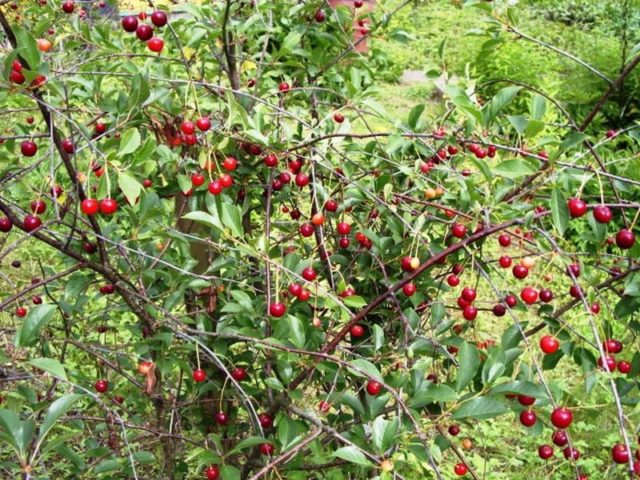
The yield of a variety depends on the quality of pollination and compliance with growing rules
Pollinators for Morel cherries
Morel cherry is considered partially self-fertile - most of its varieties, including Bryansk, are capable of creating ovaries without pollinators. However, it must be remembered that the harvest in the absence of pollinators will be small - no more than 50% of the possible volume. Therefore, in a plot near Morel, it is recommended to plant plants with similar flowering periods. For example, the description of the cherry variety Morel Bryanskaya suggests using Chernokorka and Lotovka, as well as pink Amorel, as pollinators.
Cherry blossoms occur in April and May; on average, the variety is considered mid-early.
Main characteristics
Before planting cherries on your site, you need to familiarize yourself with its main characteristics. Morel is popular due to its good yield and high hardiness.
Drought resistance, frost resistance
Morel tolerates short-term droughts well - a temporary lack of moisture does not affect the quality of flowering and fruiting. More dangerous for cherries is an excess of moisture, in which case they may suffer from fungal diseases or rot.
Reviews of Amorel black cherry characterize it as a fairly frost-resistant plant that can tolerate temperatures down to -35 °C. Morel may feel uncomfortable in the Siberian winter, but it tolerates cold snaps in the Central region very well.
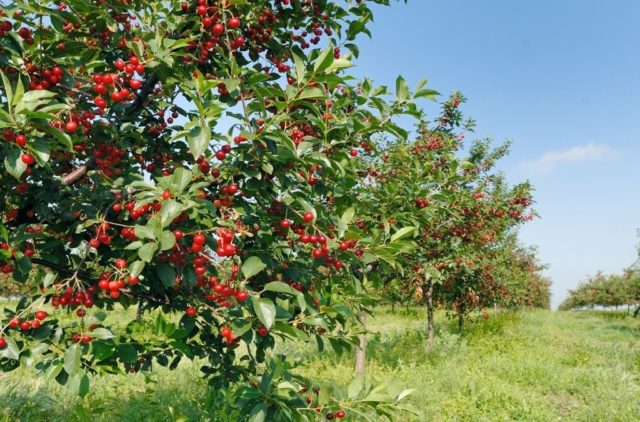
The cherry tree tolerates cold quite well
Productivity
Morel is considered a fast-growing variety; you can collect fruits from a cherry tree for the first time 3 years after planting on the site. The berries ripen by mid-July, and up to 10 kg of fruit can be collected from one tree.
Productivity is determined by the quality of pollination and compliance with the rules of caring for cherries. If Lotovka, Early Amorel or other varieties grow in the garden near Bryansk, then the plant bears fruit abundantly. If there are no pollinators, and watering and fertilizing conditions are not met, then the tree produces only 50-60% of the maximum yield.
The transportability and keeping quality of Morel fruits depend on the plant variety. Thus, black Bryansk cherry tolerates transportation well and retains its presentation for a long time. Pink Amorel has a shorter shelf life, so it is usually used for household purposes.
The scope of application of cherry fruits of the Morel variety is universal. The berries can be eaten fresh, or you can make compotes and sweet desserts from them, make jam for the winter and prepare fruit drinks and juices.
Advantages and disadvantages
Reviews of Morel Bryansk cherries note the following advantages:
- high yields subject to simple growing rules;
- precociousness, allowing you to get fruits already in the third or fourth year;
- versatility of berries;
- ability to partially self-pollinate;
- general unpretentiousness of the plant;
- resistance to cold and most fungal diseases.
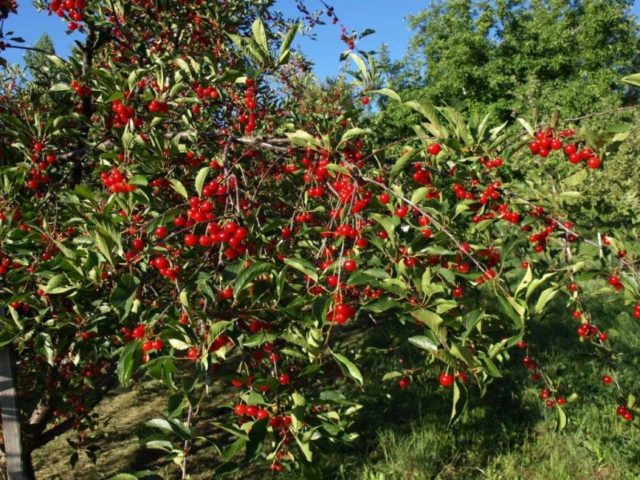
High yield is one of Morel's advantages
The disadvantages of Morel can be considered the low transportability of certain varieties, for example, pink cherries. Some subspecies of the variety are sensitive to frost and are suitable only for cultivation in the southern regions.
Landing rules
To successfully grow the Amorel cherry variety in your dacha, you need to properly root the seedling in the ground. This is easy to do - the variety has standard requirements for planting and care.
Recommended timing
It is best to plant Morel in the country in early spring, before the buds begin to bloom on the trees. In this case, it will take root better and faster than with autumn planting.
Site selection and soil preparation
Morel prefers well-ventilated, loose soils - sandy loam or loamy soil. The tree grows worse on heavy soils, and groundwater should not be allowed to flow in the immediate vicinity.
It is best to plant cherries in the western or southwestern corner of the garden, in an area with good lighting. Before planting, for Morel, dig a hole about 50 cm deep and fill it halfway with soil mixed with humus, mineral fertilizers and 2 kg of wood ash.
How to plant correctly
Immediately before planting, it is recommended to keep the cherry seedling in water for a couple of hours so that the roots are saturated with moisture. After this, the plant is carefully lowered into the prepared hole and covered completely with soil.
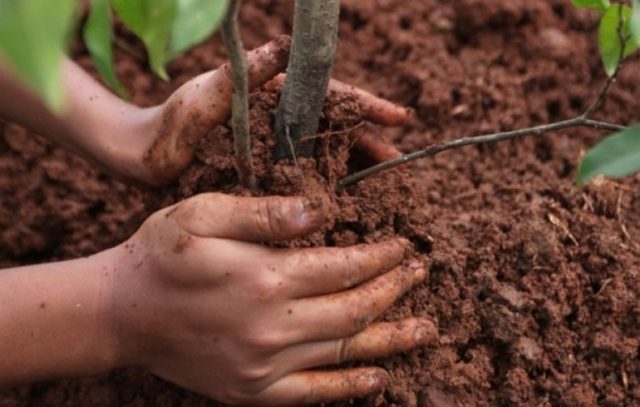
The plant should be planted in early spring before the growing season begins.
To ensure that the cherry tree grows straight, it can be tied to a support. After planting, the seedling is watered abundantly, having previously formed a small earthen bank in the circle around the trunk, it will help retain moisture. It is also recommended to immediately mulch the tree trunk circle with sawdust or hay.
Features of care
When growing a variety, it is enough to follow basic care rules. They consist of timely fertilizing, tree trimming and insulation for the winter.
Watering and fertilizing schedule
Morel cherries are drought-resistant species, so they need to be watered infrequently, about 3 times a year. The first time watering is carried out during the flowering period, the second time - during the formation of fruits. The last time the tree needs to be watered abundantly is in the fall after leaf fall to saturate the soil with moisture for the winter. If the summer turns out to be very hot, then the frequency of watering can be increased, but in general Morel tolerates the lack of moisture well.
As for fertilizing, Morel’s fertilizer requirements are standard:
- In the spring, the tree is fed with urea or ammonium nitrate containing nitrogen, this is done immediately after flowering, and then after another 2 weeks.
- In the summer, you can fertilize cherries with phosphorus and potassium; they will contribute to a good harvest and strengthen the health of Morel.
- In autumn, the plant is fertilized with organic matter - humus or compost. Also in the fall, you can once again add a little potassium or superphosphate to the soil, which will strengthen the plant’s cold resistance.
You can feed Morel in the fall when digging the soil or during insulation for the winter. Organic fertilizers can serve as mulch to protect the tree from freezing.
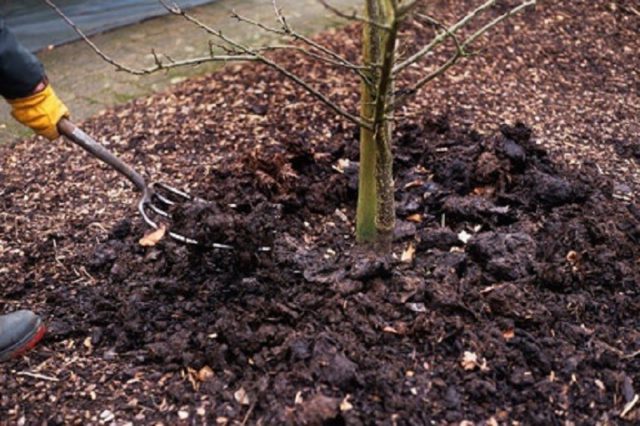
The plant is usually fertilized three times a year.
Trimming
Formative pruning is rarely required for Morel cherries; as the plant thickens, you need to remove old branches in the spring, gradually replacing them with new shoots.
Sanitary cutting for the plant is carried out annually in the fall. The procedure includes the removal of all dry and diseased branches; it is also recommended to shorten fruiting shoots by a third - this improves yield.
Preparing for winter
Although Morel is a cold-resistant cherry variety, with the onset of autumn it is recommended to insulate the cherries.In preparation for winter, it is necessary to dig up the soil under the plant trunk to 8-15 cm and insulate the roots with a layer of mulch of about 10 cm.
Diseases and pests
Description of the black cherry variety Morel says that the plant is quite resistant to most fungal diseases, but is affected by coccomycosis and moniliosis. In the first case, the leaves of the plant become covered with small dark spots and fall off; in the second, the entire cherry begins to dry out and looks as if it has been burnt.
To protect against diseases, Morel should be treated annually in spring and autumn with copper sulfate, Bordeaux mixture and popular fungicidal preparations. To protect against aphids, cherry flies, weevils and other insects, popular insecticides are used - Karbofos, Iskra, Aktaru and others.
Conclusion
The Morel cherry is a fairly unpretentious fruit plant that produces both black and pink berries with a dessert flavor. The characteristics of the variety and its subspecies make it possible to grow cherries in many regions of Russia.
Reviews
